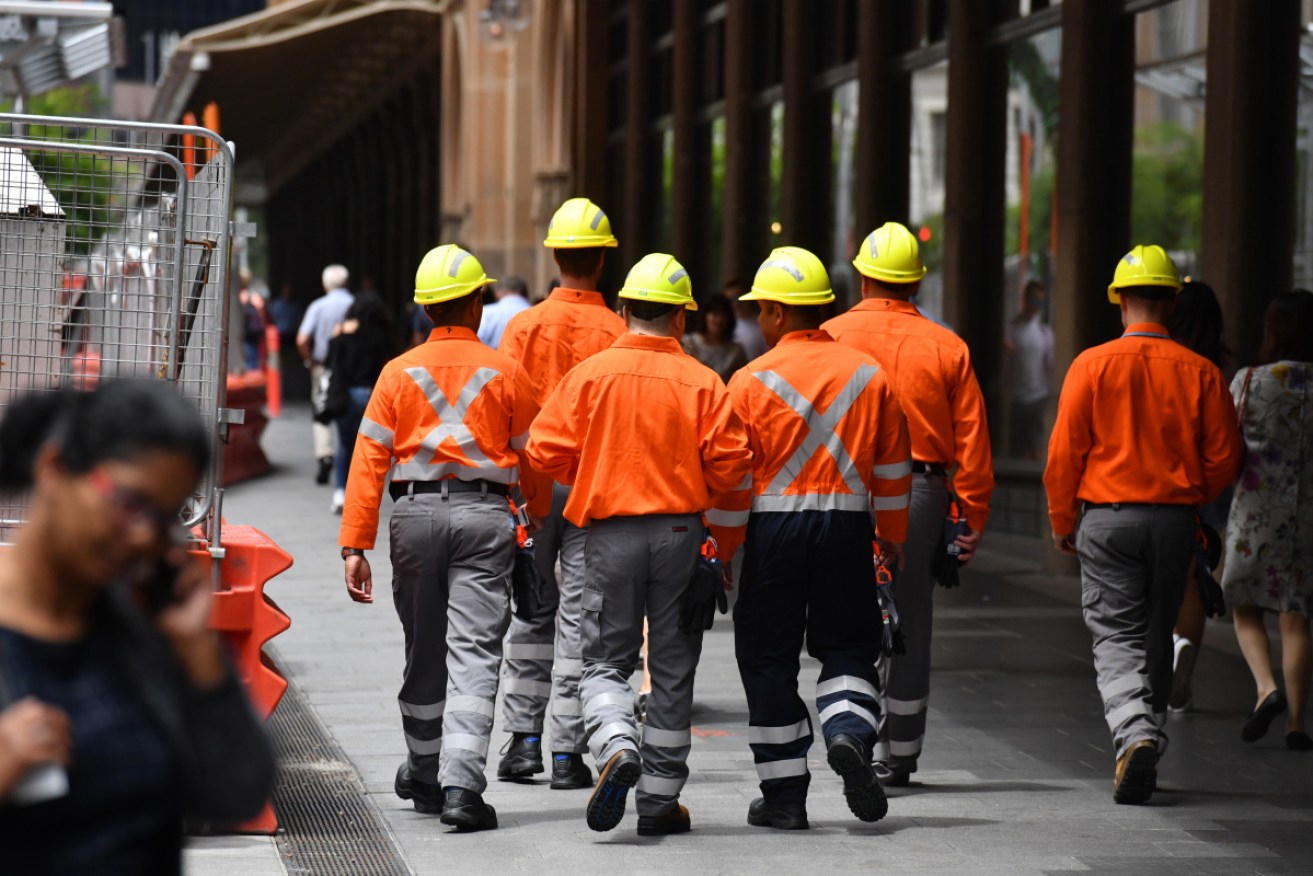How the housing slowdown is changing Australia’s construction workforce


Less demand for construction workers won't mean mass job losses due to the sector's flexibility. Photo: AAP
Falling property prices are bad news for investors and homeowners. But tighter lending conditions and slowing demand for new properties are posing another set of challenges for the Australia’s building sector.
Australia’s housing market is on track for its largest downturn since the global financial crisis in 2008, and dwindling construction starts are starting to weigh on construction sector employees – a trend that’s likely to continue for the next 12 to 18 months, according to HIA senior economist Geordan Murray.
“We anticipate there’ll be some softening in the demand for construction workers,” Mr Murray said.
“They’re probably going to have to compete a little harder for work, it won’t be as forthcoming.”
Shane Garrett, the chief economist at Master Builders Australia, similarly told The New Daily that a “sustained downturn like the one we’re predicting” will put pressure on residential construction workers.
However, both Mr Garrett and Mr Murray said the likelihood of mass job losses within the sector was slim, owing to the construction sector’s pliable nature.
Mr Garrett said the industry was “flexibly structured” because most businesses, especially the more established construction companies, have seen downturns before and gotten “good training and road testing” out of those.

Construction sector employment data highlights its cyclical nature. Data source: ABS
“Even though the amount of new homes might weaken by 30 per cent over the course of the downturn, employment won’t suffer nearly as much,” he said.
Transferrable skills
Over the next 12 months the “greatest deterioration” in construction work will be in the residential sector, according to Mr Murray, but other sectors (including engineering construction) “march to the beat of a different drum”.
That’s good news for workers, Mr Murray said, because many (though not all) of the skills needed in the residential sector are transferable to other types of construction.
Those that don’t have transferrable skills might have to learn new skills or retrain in other types of construction, or compete on price, but are unlikely to find themselves completely out of a job, Mr Murray added.
“There’s a lot of options and opportunities within the industry for trade contractors,” he said.
But these aren’t the only mechanisms working to temper the risk of job losses, Mr Garrett said.
“People in an older age group might decide to bring forward their retirement, and that’s one way the labour adjustment will happen,” he said.
“Others will work fewer hours per week rather than lay people off.”
Apprenticeships at stake
One area of the workforce where cyclical downturns, like the one playing out in Australia, is in the opportunities afforded to younger would-be construction workers.
“We’re probably going to see fewer opportunities for apprentices, Mr Murray cautioned.
“That’s something that typically comes through during a cyclical downturn, when builders don’t have that secure pipeline of work that they know they’ll have in the years ahead they’re less likely to take apprentices.”
Mr Garrett noted that this is probably the “most detrimental adjustment” that takes place during these downturns.
“[Fewer apprenticeships] means there’s a smaller in-flow of people into the industry, which is another way that headcount falls for the industry as a whole,” he said.
“But the problem with that is the a reduced amount of apprenticeships and training in response to a temporary downturn is that when conditions improve we’ve got a shortage of people with suitable skills.”








